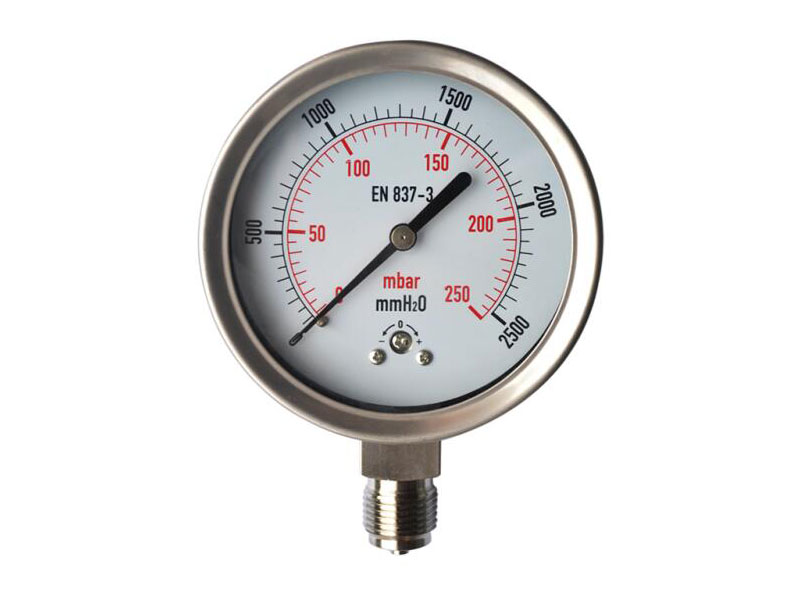How the Capsule Pressure Gauge works and how it works?
 Dec 20, 2022|
Dec 20, 2022| View:542
View:542The Capsule Pressure Gauge is designed to measure air and dry gases at relatively low pressures. It consists of two circular membranes attached to the outer edge, one of which has a hole in the middle to allow the fluid medium to enter. When there is a pressure difference between the internal and external fluid media, the chamber expands or contracts, thus creating a certain displacement and allowing pressure measurements to be made.

1. When do I need to use a Capsule Pressure Gauge?
The Capsule Pressure Gauge can be used when you need an accurate low-pressure measurement.
The Capsule Pressure Gauge is used almost exclusively for measuring gaseous media. These gauges are very accurate and have a pressure range below the reading of a Bourdon tube gauge.
They are commonly used in low-pressure pneumatic systems, breathing valves, overpressure monitoring, filter monitoring, and vacuum pumps, as well as many other situations where accuracy is required.
2. How does the Capsule Pressure Gauge work?
The Capsule Pressure Gauge takes its name from an internal pocket that is formed by connecting two circular membranes along the outer edge. The membranes act as diaphragm. One has an opening in the center which allows the gas being measured to enter the capsule.
As the pressure changes, the diaphragm expands or contracts. The change in shape is transmitted via a deflector rod, which translates the change into a rotational movement. This rotational movement is displayed on the face of the gauge, providing a reading.
This is how the Capsule Pressure Gauge is used and how it works, we hope it will help you, if you have any other questions about this, or needs it, you can contact us directly.










View More(Total0)Comment lists